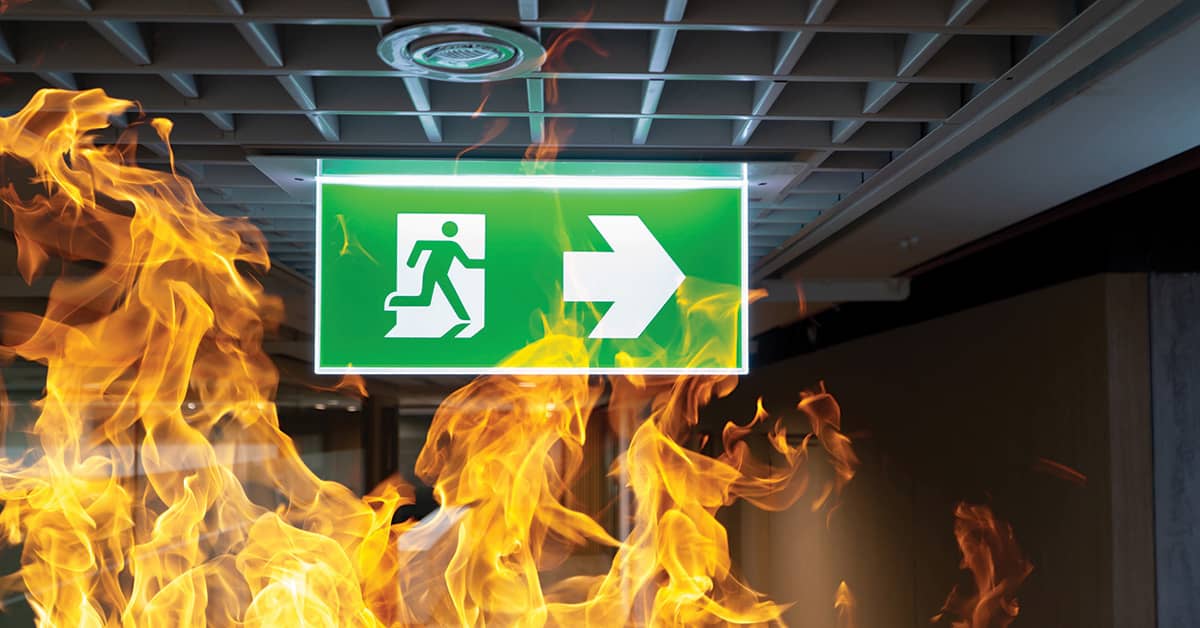Emergencies come in many forms. Do your employees know what to do?
Date Posted: 04/22/2024

Few people can think clearly and logically in a crisis, which is why it’s so important to plan for emergencies before they happen. When developing an emergency action plan, ask yourself what you would do if the worst happened. What if a fire broke out in your boiler room? What if there were a chemical spill or an act of workplace violence?
A workplace emergency is an unforeseen situation that threatens the safety and/or health of employees, customers, or the public; disrupts or shuts down operations; or causes physical or environmental damage. Emergencies can be natural or manmade and can include:
- Floods,
- Hurricanes,
- Tornadoes,
- Fires,
- Chemical spills,
- Radiological accidents,
- Explosions, and
- Workplace violence.
When there’s an emergency, taking the proper action saves lives. Employees must understand their role in your facility’s emergency action plan so they’ll be able to take the appropriate actions should the unthinkable happen. For example, some employees may have training and authorization to remain behind to operate critical plant operations before they evacuate. Some may have been trained and equipped to provide rescue. Still others may have been trained to provide first aid and medical assistance.
If employees do not fall into any of these categories, they should not attempt to perform any of these functions. They’re of more help when they follow instructions and report emergencies to the people who are trained to help.
Emergency action plans
An emergency action plan covers designated actions employers and employees must take to ensure employee safety during a fire or other emergency. When OSHA requires an employer to develop an emergency action plan under 1910.38, the plan must include certain elements:
- Procedures for reporting a fire or other emergency;
- Procedures for emergency evacuation, including the type of evacuation and exit route assignments;
- Procedures to be followed by employees who remain to operate critical plant operations before they evacuate;
- Procedures to account for all employees after an evacuation;
- Rescue and medical duties for those employees who are expected to perform them; and
- The names or job titles of persons who can provide further information or explain employees’ duties under the plan.
Training employees
Educate your employees about the types of emergencies that may occur and train them in the proper course of action. The size of your workplace and workforce, processes used, materials handled, and the availability of onsite or outside resources will determine your training requirements.
Be sure employees understand reporting procedures, alarm systems, evacuation plans, and shutdown procedures. It’s important that employees participate in any emergency drills and understand:
- How to report fires, injuries, and other emergencies;
- How and when to sound emergency alarms;
- How to recognize different types of alarms (they may be audible or visual);
- What type of emergency the alarm identifies;
- Which exit routes to use when evacuating;
- Where to assemble after evacuating or whether to shelter in place; and
- How all employees are accounted for after an emergency evacuation.
How Safety Management Suite Can Help
Part of creating a thorough emergency action plan is ensuring you’ve identified all potential emergencies and how you intend employees to respond to them. The Plans & Policies feature in the J. J. Keller® SAFETY MANAGEMENT SUITE can help. It offers numerous customizable templates, including an emergency action plan.
E-mail Newsletter
Sign up to receive the weekly EHS Insider email newsletter for safety articles, news headlines, regulatory alerts, industry events, webcasts, and more.